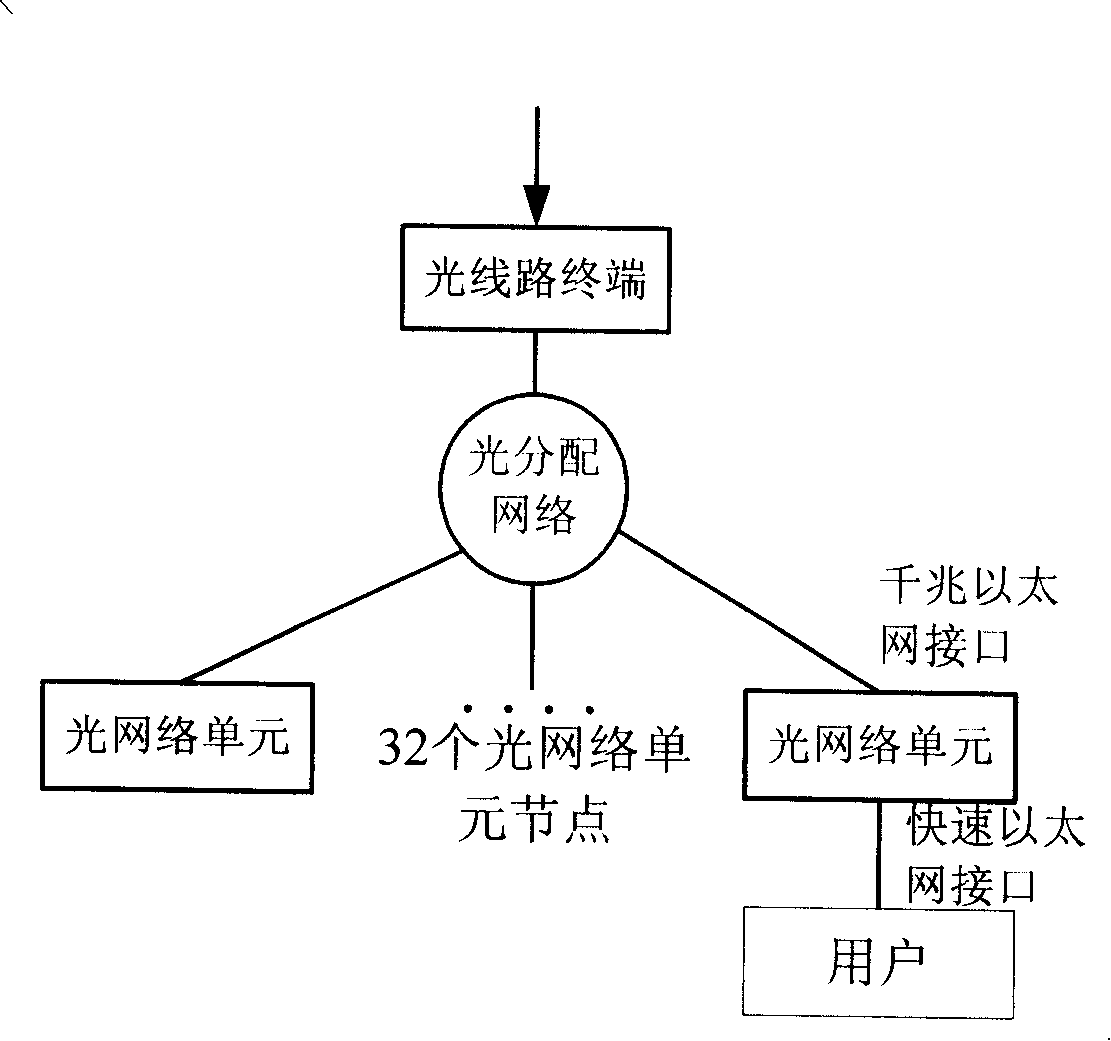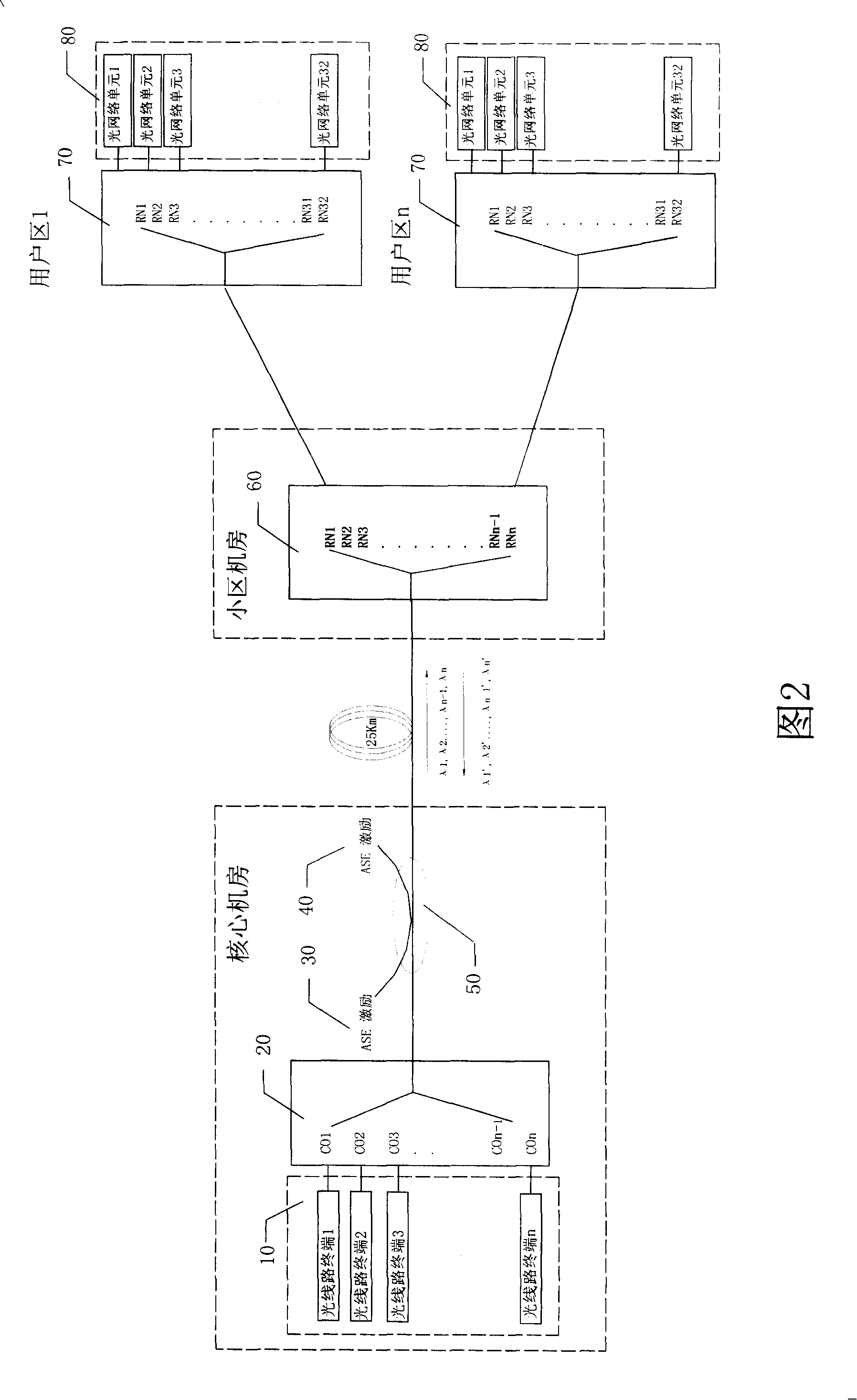Passive optical network system based on wavelength-division multiplex technique
A passive optical network and wavelength division multiplexing technology, applied in the field of passive optical networks, can solve the problems of insufficient optical fiber resources, reduce network construction costs, etc., and achieve the goal of saving optical fiber resources, reducing optical fiber access costs, and reducing management costs. Effect
- Summary
- Abstract
- Description
- Claims
- Application Information
AI Technical Summary
Problems solved by technology
Method used
Image
Examples
Embodiment Construction
[0032] As shown in Figure 2, a passive optical network system based on wavelength division multiplexing technology includes:
[0033] There are multiple optical line terminals 10, and each optical line terminal adopts mutually independent uplink wavelengths and downlink wavelengths. That is, the optical line terminals 1, 2,..., n respectively use optical signals with wavelengths λ1, λ2,..., λn as upstream optical signals, and the optical network optical line terminals 1, 2,..., n respectively use wavelengths λ1', The optical signals of λ2', ..., λn' are used as downstream optical signals. Each optical line terminal can be connected to a metropolitan area network through an optical fiber interface, or connected to a core switch and other equipment through a connection method such as a 100M or Gigabit Ethernet port;
[0034] The wavelength division multiplexer / demultiplexer 20 optically connected to the plurality of optical line terminals, when the downstream optical signals output ...
PUM
 Login to View More
Login to View More Abstract
Description
Claims
Application Information
 Login to View More
Login to View More - R&D
- Intellectual Property
- Life Sciences
- Materials
- Tech Scout
- Unparalleled Data Quality
- Higher Quality Content
- 60% Fewer Hallucinations
Browse by: Latest US Patents, China's latest patents, Technical Efficacy Thesaurus, Application Domain, Technology Topic, Popular Technical Reports.
© 2025 PatSnap. All rights reserved.Legal|Privacy policy|Modern Slavery Act Transparency Statement|Sitemap|About US| Contact US: help@patsnap.com


